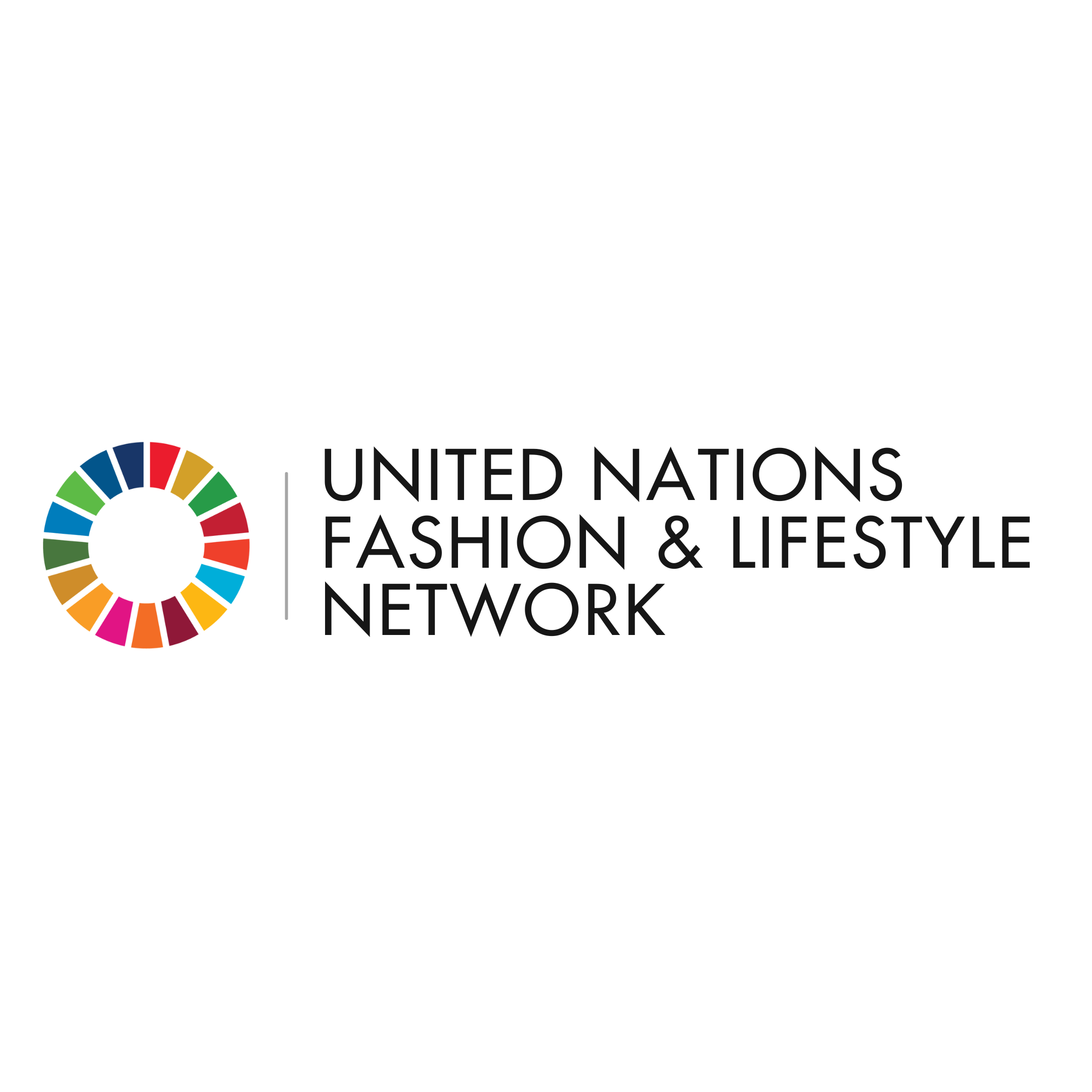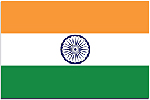The Small Town Project
Koaka Collective
(
Private sector
)
#SDGAction59353
Description
The Small Town Project is a community initiative by koaka collective that is designed to be at the crossroads of environmental and social sustainability. This project uses pre consumer textile waste like cut and sew waste and production scraps, upcycling them to create new fabric using traditional patchworking and quilting crafts with contemporary techniques. Centered on community and craft, the project actively involves local women in the creative supply chain, fostering sustainable livelihoods through skill-building and collective action.
This initiative is rooted in exploring the future of rural life amid the global climate and ecological crisis, with a focus on enabling rural communities to actively shape sustainable and resilient futures. To realize this vision, the project adopts a community-centric design system that uplifts and integrates local knowledge, lived experiences, and craft traditions. The core of the implementation involves skill-building quilting workshops, specifically designed for women in the community. These workshops are conducted regularly and structured to be accessible from within or near the home, respecting the social constraints many women face in patriarchal rural environments. By providing a flexible, home-based model, the project ensures participation without compromising domestic responsibilities. Key elements of the implementation include: Skill Development Workshops: Practical, hands-on sessions in quilting and fabric upcycling. Home-Based Work Model: Enabling women to work independently and set their own rates, removing reliance on middlemen. Local Knowledge Integration: Traditional craft techniques are blended with contemporary design methods, ensuring cultural continuity and innovation. Collaborations with Local Bodies: Partnerships with local government agencies support financial autonomy and access to healthcare for participating women. Monitoring & Community Feedback: Informal feedback loops and community dialogue ensure the system remains adaptive and rooted in actual needs. By centering education, autonomy, and sustainability, the initiative creates a replicable framework for rural empowerment and ecological responsibility.
The project promotes continuous knowledge exchange through hands-on workshops that equip women with both technical skills and an understanding of circular design principles. Storytelling is also used as a powerful tool to connect personal narratives with broader sustainability goals. By embedding education into every stage of the project, it fosters not just skill development but also a deeper cultural and environmental awareness enabling holistic, community-led change that can ripple across the industry.
This initiative is governed through a decentralized and partnership-driven model that prioritizes transparency, autonomy, and long-term collaboration. To ensure a reliable and traceable supply of textile waste, we build enduring relationships with partners who share the vision of circular fashion and recognize the commercial value of sustainable practices. The project also works with local government bodies that support women through financial subsidaries and medical assistance programs. These partnerships help integrate social impact goals with environmental sustainability by directly involving women from the community in the project. The women participating in the initiative are independent freelancers, empowered to set the value of their work. By eliminating intermediaries, we ensure fair compensation and promote economic self-reliance. All materials and the labour involved are traceable, enabling a transparent supply chain that reflects both environmental and social accountability.
One of the major challenges faced by the project has been navigating the deeply rooted cultural patriarchy prevalent in rural India. Social norms often restrict women's mobility, with many being discouraged or even prevented by male family members from participating in work outside the home. This cultural barrier posed a significant hurdle to engaging women in a meaningful and sustained way. In response, the project adapted its model to allow women to work from the comfort and safety of their homes, enabling them to participate without compromising their domestic responsibilities. This flexible, home-based structure not only respects cultural realities but also empowers women within their existing social frameworks. A key strength of the initiative lies in its sensitivity to the complex interplay between cultural, social, and economic factors—particularly in subaltern contexts. While global sustainability conversations often focus on materials and technology, they can overlook the nuanced realities of marginalized communities. This project foregrounds those lived experiences, offering a model that is not only environmentally sustainable but also socially and culturally grounded.
Redress, Fashion Revolution, RASS - Rashtriya Seva Samithi (Local Govt body), Women's Industrial School Palamaner.
SDGS & Targets
Goal 5
Achieve gender equality and empower all women and girls
5.1
End all forms of discrimination against all women and girls everywhere
5.1.1
Whether or not legal frameworks are in place to promote, enforce and monitor equality and non‑discrimination on the basis of sex
5.2
5.2.1
Proportion of ever-partnered women and girls aged 15 years and older subjected to physical, sexual or psychological violence by a current or former intimate partner in the previous 12 months, by form of violence and by age
5.2.2
Proportion of women and girls aged 15 years and older subjected to sexual violence by persons other than an intimate partner in the previous 12 months, by age and place of occurrence
5.3
5.3.1
Proportion of women aged 20-24 years who were married or in a union before age 15 and before age 18
5.3.2
Proportion of girls and women aged 15-49 years who have undergone female genital mutilation/cutting, by age
5.4
Recognize and value unpaid care and domestic work through the provision of public services, infrastructure and social protection policies and the promotion of shared responsibility within the household and the family as nationally appropriate
5.4.1
Proportion of time spent on unpaid domestic and care work, by sex, age and location
5.5
Ensure women’s full and effective participation and equal opportunities for leadership at all levels of decision-making in political, economic and public life
5.5.1
Proportion of seats held by women in (a) national parliaments and (b) local governments
5.5.2
Proportion of women in managerial positions
5.6
Ensure universal access to sexual and reproductive health and reproductive rights as agreed in accordance with the Programme of Action of the International Conference on Population and Development and the Beijing Platform for Action and the outcome documents of their review conferences
5.6.1
Proportion of women aged 15-49 years who make their own informed decisions regarding sexual relations, contraceptive use and reproductive health care
5.6.2
Number of countries with laws and regulations that guarantee full and equal access to women and men aged 15 years and older to sexual and reproductive health care, information and education
5.a
Undertake reforms to give women equal rights to economic resources, as well as access to ownership and control over land and other forms of property, financial services, inheritance and natural resources, in accordance with national laws
5.a.1
(a) Proportion of total agricultural population with ownership or secure rights over agricultural land, by sex; and (b) share of women among owners or rights-bearers of agricultural land, by type of tenure
5.a.2
Proportion of countries where the legal framework (including customary law) guarantees women’s equal rights to land ownership and/or control
5.b
5.b.1
Proportion of individuals who own a mobile telephone, by sex
5.c
Adopt and strengthen sound policies and enforceable legislation for the promotion of gender equality and the empowerment of all women and girls at all levels
5.c.1
Proportion of countries with systems to track and make public allocations for gender equality and women’s empowerment
Goal 8
Promote sustained, inclusive and sustainable economic growth, full and productive employment and decent work for all
8.1
8.1.1
Annual growth rate of real GDP per capita
8.2
Achieve higher levels of economic productivity through diversification, technological upgrading and innovation, including through a focus on high-value added and labour-intensive sectors
8.2.1
Annual growth rate of real GDP per employed person
8.3
Promote development-oriented policies that support productive activities, decent job creation, entrepreneurship, creativity and innovation, and encourage the formalization and growth of micro-, small- and medium-sized enterprises, including through access to financial services
8.3.1
Proportion of informal employment in total employment, by sector and sex
8.4
Improve progressively, through 2030, global resource efficiency in consumption and production and endeavour to decouple economic growth from environmental degradation, in accordance with the 10-Year Framework of Programmes on Sustainable Consumption and Production, with developed countries taking the lead
8.4.1
Material footprint, material footprint per capita, and material footprint per GDP
8.4.2
Domestic material consumption, domestic material consumption per capita, and domestic material consumption per GDP
8.5
8.5.1
Average hourly earnings of female and male employees, by occupation, age and persons with disabilities
8.5.2
Unemployment rate, by sex, age and persons with disabilities
8.6
8.6.1
Proportion of youth (aged 15-24 years) not in education, employment or training
8.7
Take immediate and effective measures to eradicate forced labour, end modern slavery and human trafficking and secure the prohibition and elimination of the worst forms of child labour, including recruitment and use of child soldiers, and by 2025 end child labour in all its forms
8.7.1
Proportion and number of children aged 5‑17 years engaged in child labour, by sex and age
8.8
Protect labour rights and promote safe and secure working environments for all workers, including migrant workers, in particular women migrants, and those in precarious employment
8.8.1
Fatal and non-fatal occupational injuries per 100,000 workers, by sex and migrant status
8.8.2
Level of national compliance with labour rights (freedom of association and collective bargaining) based on International Labour Organization (ILO) textual sources and national legislation, by sex and migrant status
8.9
By 2030, devise and implement policies to promote sustainable tourism that creates jobs and promotes local culture and products
8.9.1
Tourism direct GDP as a proportion of total GDP and in growth rate
8.10
Strengthen the capacity of domestic financial institutions to encourage and expand access to banking, insurance and financial services for all
8.10.1
(a) Number of commercial bank branches per 100,000 adults and (b) number of automated teller machines (ATMs) per 100,000 adults
8.10.2
Proportion of adults (15 years and older) with an account at a bank or other financial institution or with a mobile-money-service provider
8.a
8.a.1
Aid for Trade commitments and disbursements
8.b
By 2020, develop and operationalize a global strategy for youth employment and implement the Global Jobs Pact of the International Labour Organization
8.b.1
Existence of a developed and operationalized national strategy for youth employment, as a distinct strategy or as part of a national employment strategy
Goal 12
Ensure sustainable consumption and production patterns
12.1
Implement the 10-Year Framework of Programmes on Sustainable Consumption and Production Patterns, all countries taking action, with developed countries taking the lead, taking into account the development and capabilities of developing countries
12.1.1
Number of countries developing, adopting or implementing policy instruments aimed at supporting the shift to sustainable consumption and production
12.2
By 2030, achieve the sustainable management and efficient use of natural resources
12.2.1
Material footprint, material footprint per capita, and material footprint per GDP
12.2.2
Domestic material consumption, domestic material consumption per capita, and domestic material consumption per GDP
12.3
By 2030, halve per capita global food waste at the retail and consumer levels and reduce food losses along production and supply chains, including post-harvest losses
12.3.1
(a) Food loss index and (b) food waste index
12.4
By 2020, achieve the environmentally sound management of chemicals and all wastes throughout their life cycle, in accordance with agreed international frameworks, and significantly reduce their release to air, water and soil in order to minimize their adverse impacts on human health and the environment
12.4.1
12.4.2
(a) Hazardous waste generated per capita; and (b) proportion of hazardous waste treated, by type of treatment
12.5
By 2030, substantially reduce waste generation through prevention, reduction, recycling and reuse
12.5.1
National recycling rate, tons of material recycled
12.6
Encourage companies, especially large and transnational companies, to adopt sustainable practices and to integrate sustainability information into their reporting cycle
12.6.1
12.7
Promote public procurement practices that are sustainable, in accordance with national policies and priorities
12.7.1
Number of countries implementing sustainable public procurement policies and action plans
12.8
By 2030, ensure that people everywhere have the relevant information and awareness for sustainable development and lifestyles in harmony with nature
12.8.1
Extent to which (i) global citizenship education and (ii) education for sustainable development are mainstreamed in (a) national education policies; (b) curricula; (c) teacher education; and (d) student assessment
12.a
Support developing countries to strengthen their scientific and technological capacity to move towards more sustainable patterns of consumption and production
12.a.1
Installed renewable energy-generating capacity in developing and developed countries (in watts per capita)
12.b
Develop and implement tools to monitor sustainable development impacts for sustainable tourism that creates jobs and promotes local culture and products
12.b.1
Implementation of standard accounting tools to monitor the economic and environmental aspects of tourism sustainability
12.c
Rationalize inefficient fossil-fuel subsidies that encourage wasteful consumption by removing market distortions, in accordance with national circumstances, including by restructuring taxation and phasing out those harmful subsidies, where they exist, to reflect their environmental impacts, taking fully into account the specific needs and conditions of developing countries and minimizing the possible adverse impacts on their development in a manner that protects the poor and the affected communities
12.c.1
Amount of fossil-fuel subsidies (production and consumption) per unit of GDP
Goal 13
Take urgent action to combat climate change and its impacts
13.1
Strengthen resilience and adaptive capacity to climate-related hazards and natural disasters in all countries
13.1.1
Number of deaths, missing persons and directly affected persons attributed to disasters per 100,000 population
13.1.2
Number of countries that adopt and implement national disaster risk reduction strategies in line with the Sendai Framework for Disaster Risk Reduction 2015–2030
13.1.3
Proportion of local governments that adopt and implement local disaster risk reduction strategies in line with national disaster risk reduction strategies
13.2
Integrate climate change measures into national policies, strategies and planning
13.2.1
Number of countries with nationally determined contributions, long-term strategies, national adaptation plans and adaptation communications, as reported to the secretariat of the United Nations Framework Convention on Climate Change
13.2.2
Total greenhouse gas emissions per year
13.3
Improve education, awareness-raising and human and institutional capacity on climate change mitigation, adaptation, impact reduction and early warning
13.3.1
Extent to which (i) global citizenship education and (ii) education for sustainable development are mainstreamed in (a) national education policies; (b) curricula; (c) teacher education; and (d) student assessment
13.a
Implement the commitment undertaken by developed-country parties to the United Nations Framework Convention on Climate Change to a goal of mobilizing jointly $100 billion annually by 2020 from all sources to address the needs of developing countries in the context of meaningful mitigation actions and transparency on implementation and fully operationalize the Green Climate Fund through its capitalization as soon as possible
13.a.1
Amounts provided and mobilized in United States dollars per year in relation to the continued existing collective mobilization goal of the $100 billion commitment through to 2025
13.b
Promote mechanisms for raising capacity for effective climate change-related planning and management in least developed countries and small island developing States, including focusing on women, youth and local and marginalized communities
13.b.1
Number of least developed countries and small island developing States with nationally determined contributions, long-term strategies, national adaptation plans and adaptation communications, as reported to the secretariat of the United Nations Framework Convention on Climate Change
SDG 14 targets covered
| Name | Description |
|---|
Deliverables & Timeline
Curated collections of outer wear jacketsa, tops and artworks created from textile waste by trained local women, accompanied by a branding and marketing kit.
A fully documented program to train women in textile sorting, sewing, design, and small business skills.
A report and presentation that documents the project's environmental and social impact, co-created with community input.
Resources mobilized
Partnership Progress

Feedback
Action Network

Timeline
Entity
Region
- Asia and Pacific
Geographical coverage
Other beneficiaries
The primary beneficiaries of this initiative are the women in the small-town community and their families. By engaging them directly in upcycling and craft-based livelihoods, the project provides economic opportunities, skill development, and greater financial autonomy. Beyond direct economic benefits, the project also addresses broader environmental justice. As Indigenous women of color, many in this community are among the most vulnerable to the impacts of climate change and textile waste colonialism. By working with waste materials and promoting circular practices, the initiative empowers these women to become active agents of change in both their local economy and the global sustainability movement.
More information
Countries

Contact Information
Damini Mittai, Mrs

